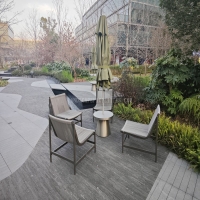Welcome to the website for landscape facilities products and knowledge.
How does concrete resist curling?
Concrete curling occurs when the top and bottom surfaces of a slab dry at different rates, causing edges to warp upward or downward. To resist curling, concrete relies on several key mechanisms:
1. Moisture Control: Proper curing and sealing minimize uneven moisture loss, reducing differential shrinkage between layers. Using vapor barriers beneath slabs also helps maintain consistent moisture levels.
2. Reinforcement: Steel rebar or wire mesh reinforces the slab, distributing stresses and restraining deformation. Fiber-reinforced concrete further enhances crack and curl resistance.
3. Mix Design Optimization: Low-shrinkage concrete mixes with supplementary materials like fly ash or slag reduce internal stresses. Proper aggregate grading also improves dimensional stability.
4. Joint Placement: Strategic placement of control joints allows controlled cracking, relieving stress that could lead to curling.
5. Subgrade Preparation: A compacted, uniform subgrade prevents uneven support, which exacerbates curling.
By addressing these factors, contractors can significantly reduce curling and ensure long-lasting, flat concrete surfaces.
Related search:

Recommendation
Metal structure rattan chair without armrests for single person, with woven seat and backrest.